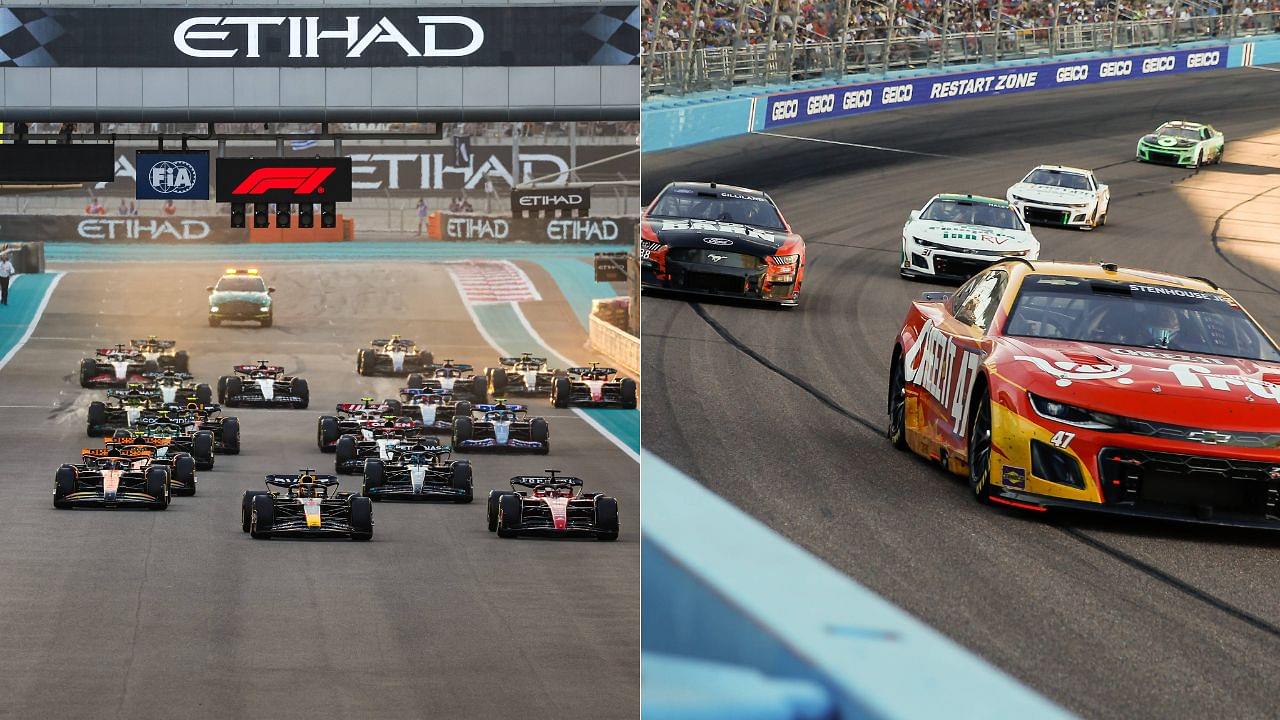Prior to the release of Drive to Survive, Formula 1 held little significance for American fans. However, the popularity of F1 has skyrocketed in the United States since the release of this series. Looking at F1‘s rapid rise, NASCAR, traditionally the most-watched North American racing series, has decided to revamp its image. Following in the footsteps of F1, NASCAR has enlisted the help of Netflix to provide fans with an inside look at the sport. The upcoming five-episode series, titled NASCAR Full Speed, will offer a behind-the-scenes perspective.
However, while each sport has its distinct qualities, there are commonalities such as the team structure involving mechanics, directors, managers, and engineers, all contributing to the intense competition. Another shared aspect is the substantial fan attendance, attracting sponsors to invest in both sports.
Motorsports teams and governing bodies generate revenue through various channels, including broadcasting rights, merchandising, and fees for hosting races. Both Formula 1 and NASCAR, for instance, sell TV rights to broadcast races and receive significant income from circuits for hosting events.
Still, despite their common commitment to safety, NASCAR and Formula 1 employ distinct technologies and strategies customized for their respective racing environments. The two series differ in their racing philosophies, technology applications, cultural influence, and car designs.
The Car Design
For those who may struggle to distinguish between Formula 1 (F1) and NASCAR, a closer examination reveals notable differences. In NASCAR, the ‘Car of Tomorrow’ template aligns the vehicles closely with models sold to the public, making them more relatable.
In contrast, F1 cars, with their sharp-nosed designs crafted for aerodynamic efficiency, are rarely seen on ordinary roads. It is because they prioritize slicing through the air to reduce resistance, making them impractical for everyday use.
The disparities extend to speed and weight. While NASCAR cars reach speeds up to 200 MPH, F1 cars can hit speeds of as high as 233 MPH.
In terms of weight, NASCAR vehicles tip the scales at around 3250 pounds (1474 kg), powered by a 5.86-liter gasoline engine. On the other hand, F1 cars weigh significantly less at approximately 1500 pounds (680 kg), utilizing a lighter 1.6-liter turbo engine.
Moreover, the cost factor sets them apart. NASCAR automobiles, being modified from stock come at a relatively lower cost of around $25 million. On the other hand, the intricacies and advanced technologies of F1 contribute to a much higher price tag, with a team of two Formula 1 cars reaching up to a staggering $470 million.
The Engines
In NASCAR, the stock cars are equipped with V8 engines, featuring a powerful 5.8-liter unit that produces around 820 horsepower at 900 RPM. This robust power unit is engineered to withstand the demanding conditions of covering approximately 800 miles per engine.
On the other hand, Formula 1 cars epitomize the pinnacle of automotive technological advancement. Their engines are 1.6-liter turbocharged V6 hybrids, delivering 755 horsepower. The Energy Recovery System then offsets the restriction, providing an additional 160 horsepower.
Moreover, where NASCAR emphasizes endurance and sheer power, Formula 1 directs its attention toward integrating sophisticated energy systems to achieve peak performance and efficiency.
The Tracks
The race tracks play a pivotal role in determining the champion in motor racing. Interestingly, when comparing the track aspect in NASCAR and Formula 1, significant differences emerge. NASCAR predominantly employs oval tracks, requiring drivers to make numerous left turns, and the races are predominantly held in Canada and the US.
In contrast, Formula 1 tracks can take any shape. The only requirement for them is that the formation of a circuit must involve a variety of twists and turns. The diverse nature of these tracks can occasionally pose challenges for teams striving to secure a favorable outcome in the race.
The Regulations
In the world of Motorsports, regulations are crucial for ensuring fair play. However, a notable disparity in regulations between NASCAR and Formula 1 revolves around the use of telemetry. While NASCAR strictly prohibits its use, F1 teams leverage telemetry data from their engineers to adapt and refine their strategies during races.
Nevertheless, when delving into the topic of pit stops, it becomes evident that they are a crucial element in both sports, albeit with distinct purposes. NASCAR races, being much longer, necessitate multiple pit stops for refueling and tire changes.
In contrast, Formula 1’s regulations dictate that a car must utilize at least two of the three available tire types (in case of a dry race), requiring at least one pit stop. However, a closer look at the refueling issue reveals a big distinction between F1 and NASCAR.
In NASCAR, refueling holds a crucial role, especially considering the races extend over 300 laps, resulting in race durations of up to 4 hours. This stands in stark contrast to F1, where races are relatively shorter, and cars can finish the race without the need for refueling.
Another notable rule difference between F1 and NASCAR pertains to the significance of time. Similar to baseball, NASCAR races lack a set duration; the race continues until all laps are completed. Conversely, in F1, races end after 2 hours, regardless of the laps completed.
What distinguishes F1 Championship Format from NASCAR?
NASCAR holds a minimum of 33 races each year. The total may rise to 38 if the Bud Shootout and All-Star race are also taken into account. On the other hand, the Formula One model permits a maximum of 23 races per season.
Despite the fact that both championships employ a point system, there are some key variations. In Formula One, the number of points a driver scores determines the winner. However, in NASCAR, points are very important for the playoffs at the end of the season.
NASCAR has been using a multi-stage race structure over the years, giving points for each stage completed. Conversely, Formula One races take place in a sequence of Grand Prix events that usually several countries host. The top 10 drivers earn points depending on where they finish in the race.








